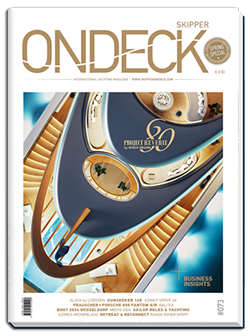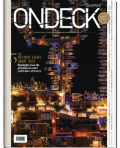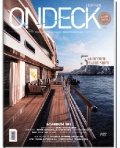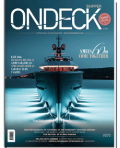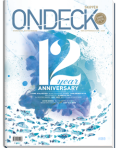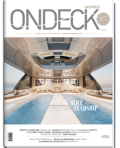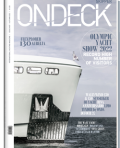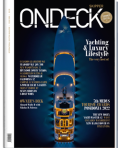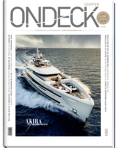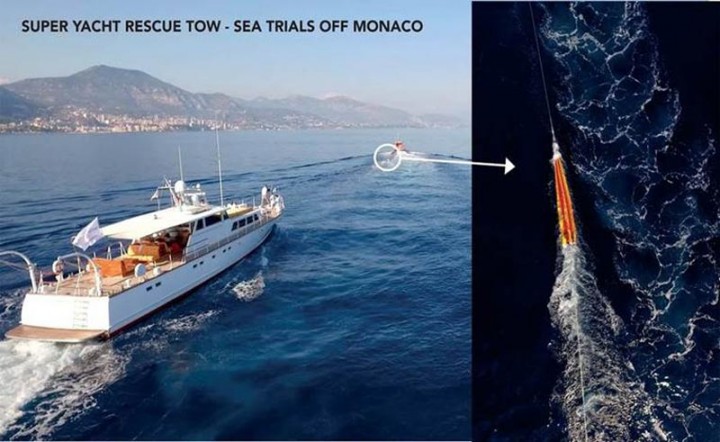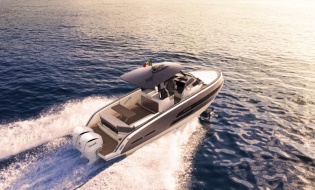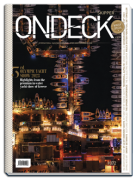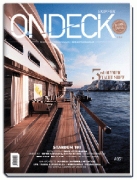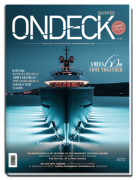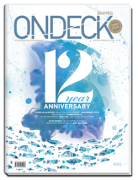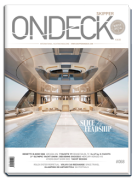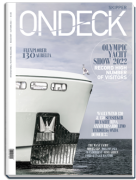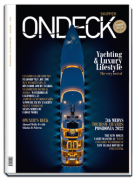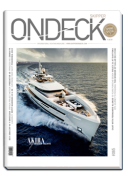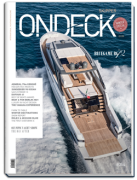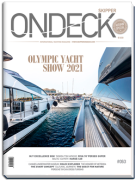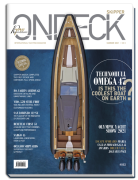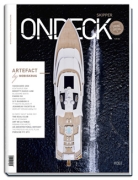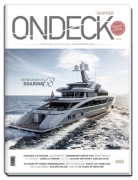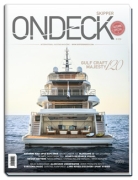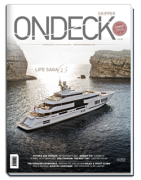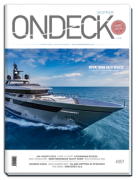
Decades ago, a New Zealand sea anchor firm set out to save lives, vessels and the environment. And it wanted to be the best designer and manufacturer of sea anchors in the world.
Now, with international awards, high-profile contracts, and testimonials from those it has saved to prove it, it has done what it set out to do. And the company wants to keep doing it better.
Coppins Sea Anchors was judged ‘Top Winner’ with two world’s-best awards at the Industrial Fabrics Association International (IFAI) in New Orleans recently. Its winning entry was for a sea anchor for superyachts, which included an integrated rescue system, and several other features not seen before, anywhere.
Sea anchors resemble underwater parachutes, and are used to stabilise and slow the drift of a vessel, when control has been lost in extreme weather or as a result of damage or equipment failure. It does this by turning the vessel’s bow into the weather and acting as a brake, reducing the risk of capsize and stabilising it until the storm passes, or while repairs are done or help arrives. Managing Director Bill Coppins says that the company can now design and build sea anchors to protect any vessel in the world, regardless of its size.
BOX: Kiwis ruling the waves
Today, few would be surprised that a New Zealand company leads the world in marine technology. This is the country that has so dominated world sailing in recent years. The country won the America’s Cup emphatically last year, and has competed in every final since 1992. Even in the ones that New Zealand hasn’t won since then, its technology, designers and sailors have featured in every contest.
New Zealand yachts are world leaders; yachts designed by Bruce Farr, for example, have won the Round the World races five times, and the Sydney to Hobart race 15 times. Kiwi hero Sir Peter Blake trounced the field in the Round the World race in 1989, with an unprecedented six victories in the event’s six legs. And with only four million people, New Zealand has won 18 Olympic gold medals on the water from 1984.
Coppins described the background to this year’s winning entry. An agent based in France had requested a sea anchor system that would enable quicker rescue of yachts in distress. The Mediterranean Sea is often seen as having quite benign conditions, but a $US39 million megayacht had sunk in a storm there recently. Also, yachts based there were often required to cross the Atlantic or other oceans, he said.
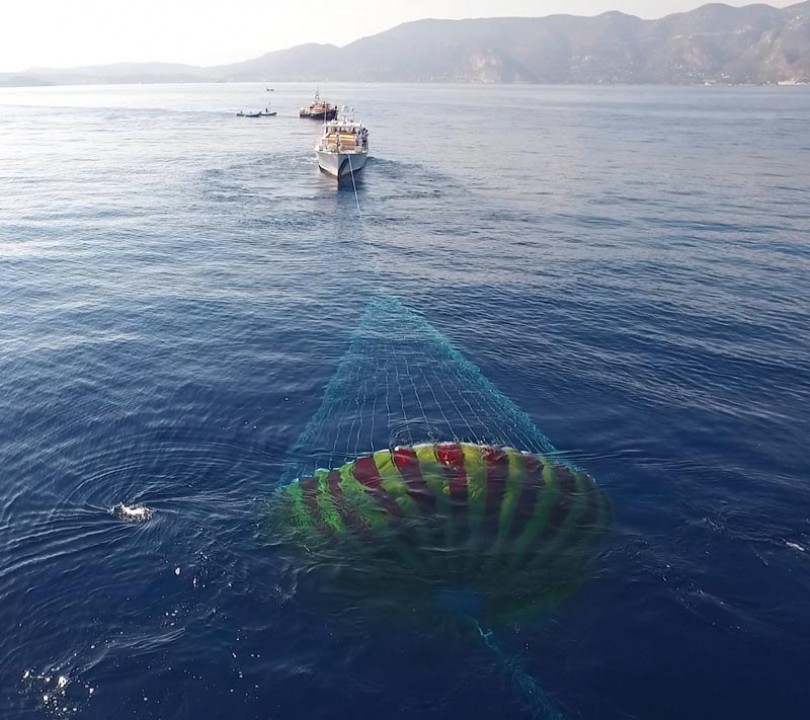
Coppins said that a reliable high-performance sea anchor was vital on a superyacht, and particularly on long passages such as the Pacific, Atlantic or Indian Oceans where help or repairs might take a long time, resulting in danger in a storm, or great discomfort even in a moderate swell.
The company’s new product, designed to avoid disaster and facilitate rescue at sea, was also the Supreme Winner in the 2017 Outdoor Fabric Products Association of New Zealand (OFPANZ), the Kiwi industry’s leading award. The company also won first place in the Association’s Green Awards for environmental awareness. This was a new category in the previous year, and the company has now won this award in both years.
Coppins said he was delighted to win these awards again. “We’ve worked hard for years on our designs, materials and quality, and our anchors have been recognised as world leaders. But it’s still exciting to win awards like these - it doesn’t make us want to rest on our laurels, it really makes us work harder to get further ahead of any other product, anywhere,” he said. “We test our products in extreme conditions and we know they’ll always work. And every year, we have customers who tell us they’ve saved their lives and vessels, which helps to confirm that.”
BOX: Developing the ultimate Superyacht Sea Anchor
Coppins sea anchors had their roots in the local fishing industry, and have been developed and tested in extreme conditions over decades. But the 2017 award-winning superyacht anchor includes some key features never seen before.
A fully integrated towline allows a quicker, safer connection to a rescue vessel from a greater distance, reducing risks to lives, vessels and the environment. It can be very difficult for a rescue vessel to get close enough to a yacht in distress to attach a towline. The new system has a buoy at the end of the sea anchor line, easily visible from a distance and simple for the rescue vessel to reach. It is possible to make a secure connection with the vessels still 200m apart, rather than under about 40m without such a system. The sea anchor line then doubles as the towline, and the stricken yacht can be towed to safety.
The sea anchor also includes at least three other new features. It is lighter and stronger than any comparable product, due to its unique design and made-to-order materials, with a special 3D shape which creates more drag in the water with a smaller amount of fabric; the smaller size means it is more likely to be carried on a superyacht, where storage space is always at a premium.
A new failsafe release mechanism enables instant deployment in an emergency, as soon as the system is clear of the superyacht.
And finally, when the emergency has passed, an innovative compression system allows the product to be repacked easily and compactly at sea by one person, saving time and storage space. It is then available for re-use. Any one of these innovations can be a lifesaver, Coppins said.
For more than 70 years, the IFAI awards have recognized innovation, technical skill and design. Entries are judged by industry experts, editors, architects, educators and design professionals, selected for their knowledge in a particular field of study or type of product. In 2017 the organisation’s website shows that 235 entries were received from 11 countries. But Coppins says that this tells only a part of the story: “This is the most sought-after award for the industry anywhere in the world, and only the very best designers and manufacturers in the world will even enter it”, he said.
The international awards Coppins has won in the past three years demonstrate its interests and the company’s growing recognition worldwide. In 2015 its winning entry was a rescue system that could be delivered by helicopter to stricken vessels off Scandinavian coastlines, to avert disaster and prevent damage from oil slicks. In 2016 the company won the ‘world’s best’ award for a steerage system supplied to BP, for emergency use on a massive oil production vessel being towed from Korea to the North Sea.
Earlier awards include one for a steerage and control system designed for the US Navy, to hold cargo ships in position for emergency transfers in stormy conditions at sea. The latest awards reflect growing demand for superyachts, and the need to protect them, their crews, and the environment.
Coppins said the environmental awards were pleasing. “Pressures are increasing everywhere, even in oceans that were quite recently seen as pristine. As well as helping to avoid damage through collisions and oil spills, the company is working in initiatives such as ‘The Ocean Cleanup’, aiming to remove and recycle massive quantities of plastic debris from seas worldwide. And more locally, in another branch of the company, we’re keen advocates of cycling for sustainable transport and recreation,” he said.
After presenting the company with one of its international awards, IFAI described Coppins as “defying design boundaries to produce unique, innovative and functional products.”
The Coppins way, combining leading technology, design and workmanship, and teaming up with high-tech world leaders like SRI International and Oceaneering International, has attracted attention in high places.
Tom Peters, one of the world’s most influential business thinkers, singled out Coppins as one of New Zealand’s most impressive companies. Peters, a champion of excellence in business and sometimes described as an über-guru, said “Coppins-like firms can be an economy’s driver that compare to Germany’s Mittelstand. They demonstrate that you don’t have to be in software or biotech to be ‘sexy’.” He described the company as “The (Mittelstand) Magicians of Motueka” and “the best company on earth at making sea anchors”; a company which thrives on “wicked problems”.
Coppins had started making sea anchors for the local fishing industry, an area still of great importance to the company. The factory sits close to the sea, with some very powerful tides. New designs are tried and tested mercilessly in these currents, often to breaking point, he said. They can be back in the factory in a few minutes to be modified and strengthened, then back into the tide again to repeat the cycle until it’s certain these will meet any challenge, anywhere. “We now build anchors that can protect the biggest ships in the world, and there are new developments every year. It’s been a fascinating journey,” he said.
“New Zealand has been showing the world its expertise and leadership at sea in recent years, not just in sailing but in design, innovation and marine technology as well. Our company made a commitment many years ago to be Number 1 in the world, and we’re going to make sure it stays that way,” he said.











